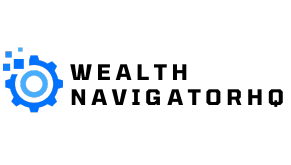Table of Contents
ToggleIn a world where multitasking reigns supreme, the quest for efficient note-taking has never been more crucial. Imagine breezing through a video lecture or tutorial while a clever AI buddy like ChatGPT captures all the key points for you. Sounds like a dream, right? Well, buckle up because this might just be the productivity hack you didn’t know you needed.
Gone are the days of frantic scribbling and rewinding videos for that one crucial detail. With ChatGPT on the job, note-taking can become as easy as pie—or at least a piece of cake. But can this AI really keep up with the fast-paced world of video content? Let’s dive into the nitty-gritty and find out if ChatGPT can indeed transform your video-watching experience into a seamless note-taking adventure.
Overview of Note-Taking Technologies
Note-taking technologies have evolved significantly, making it easier for individuals to capture and organize information. Various tools, including digital note-taking apps and AI-driven platforms, have emerged, each catering to different user needs.
Digital note-taking applications provide features like audio recording, tagging, and real-time collaboration. Applications such as Evernote and OneNote enable users to streamline their notes, enhancing retrieval and integration across devices.
AI-driven tools, like ChatGPT, offer capabilities that go beyond traditional note-taking methods. They analyze spoken content in videos, summarizing main ideas and capturing important details. Utilizing natural language processing, these tools adapt their outputs based on video context, providing coherent and relevant summaries.
Efficiency becomes paramount with these technologies. Users often require quick access to information without sifting through extensive notes. Audiovisual content can present challenges for manual note-taking, making automated solutions more appealing.
Integration plays a crucial role in the effectiveness of note-taking technologies. Seamless connections with other platforms, such as learning management systems, facilitate the sharing of captured insights. Ensuring that notes remain organized and accessible improves overall productivity.
In summation, the landscape of note-taking technologies continually adapts to meet user demands. Whether through traditional apps or innovative AI solutions, the goal remains the same: simplifying the note-taking process, thereby enhancing learning and retention.
Understanding ChatGPT

ChatGPT serves as a powerful AI tool designed to enhance note-taking, particularly in a video context. It utilizes advanced natural language processing to analyze spoken content effectively.
How ChatGPT Works
ChatGPT processes video audio by converting speech into text. This functionality allows it to identify key points and summarize essential information within the spoken content. Its machine learning algorithms adapt over time, improving the quality of generated notes. Users benefit from the clear, coherent outputs ChatGPT produces, making information retrieval more straightforward. Additionally, it enables real-time summarization that keeps pace with fast-moving video lectures.
Limitations of ChatGPT
ChatGPT encounters challenges with contextual nuances during video analysis. It may struggle with identifying technical jargon or references specific to certain fields. Understanding visual aids or non-verbal elements presents difficulties, as it relies solely on audio content. Potential inaccuracies in summaries can arise if audio quality is poor or if multiple speakers contribute simultaneously. Users should remain aware of these limitations when depending on ChatGPT for comprehensive note-taking in video formats.
Can ChatGPT Take Notes on a Video?
ChatGPT can effectively summarize and take notes on video content. It leverages advanced natural language processing to capture essential points and key themes, improving the note-taking experience.
Available Features for Note-Taking
ChatGPT offers several notable features for effective note-taking. It analyzes speech to create coherent text summaries. Users can obtain key insights without watching the entire video. The platform’s ability to process information ensures that vital details are not overlooked. In addition, it quickly generates summaries, assisting learners with fast-paced content. Accessibility features also enhance usability, allowing for easy integration into various educational or professional settings.
Comparing ChatGPT with Other Tools
ChatGPT stands out when compared to traditional note-taking applications. While tools like Evernote focus on manual entry and organization, ChatGPT automates the summarization process. Many digital platforms prioritize structured outlines but may lack adaptive learning capabilities. In contrast, ChatGPT’s machine learning continuously refines its outputs, improving accuracy. Although limitations exist, its ability to provide instant summaries distinguishes it from static note-taking solutions. Overall, this AI-driven tool optimizes the note-taking process in a way that enhances efficiency and retention.
Best Practices for Using ChatGPT for Note-Taking
Leveraging ChatGPT for effective note-taking involves several best practices. Start by providing clear context. When feeding ChatGPT a video transcript, specify the main topics or key points to focus on. This ensures more relevant and concise summaries.
Utilize timestamps for structured note-taking. By adding timestamps in the transcript, users can locate the referenced sections. Clear organization allows for easy navigation through the material later.
Summarize in segments. Breaking down longer videos into smaller parts aids ChatGPT in processing information more effectively. This segmented approach improves retention and clarity, yielding high-quality notes.
Review output for accuracy. Even with advanced algorithms, it’s crucial to check summaries against the original content. This verification process helps catch potential errors and ensures notes reflect the main ideas correctly.
Incorporate visual aids along with text. Providing context regarding charts or images enhances ChatGPT’s ability to summarize accurately. While it primarily processes text, acknowledging visual elements helps in creating a more comprehensive overview.
Keep interactions concise and clear. Fewer convoluted instructions lead to better results. Direct queries simplify the note-taking process and improve overall efficiency.
Maintain an active learning mindset. Engaging with the summaries can bolster memory retention. Users can add personal insights or questions to the notes, transforming them into interactive learning tools.
Adapt tools as needed. Each video possibly presents different challenges, so flexibility is essential. Customizing the approach based on content type optimizes the note-taking experience, making it more effective for individual needs.
By applying these practices, users can maximize the potential of ChatGPT for efficient note-taking, transforming how they interact with video content.
ChatGPT is revolutionizing the way individuals approach note-taking from video content. Its ability to swiftly analyze spoken language and generate coherent summaries offers a significant advantage for students and professionals alike. By automating the note-taking process ChatGPT not only saves time but also enhances comprehension and retention of key information.
While it’s essential to acknowledge its limitations such as challenges with context and accuracy users can still leverage its strengths to optimize their learning experience. With best practices in place users can effectively harness ChatGPT’s capabilities transforming traditional note-taking into a more efficient and productive endeavor. As technology continues to evolve the future of note-taking looks promising with AI tools leading the way.







